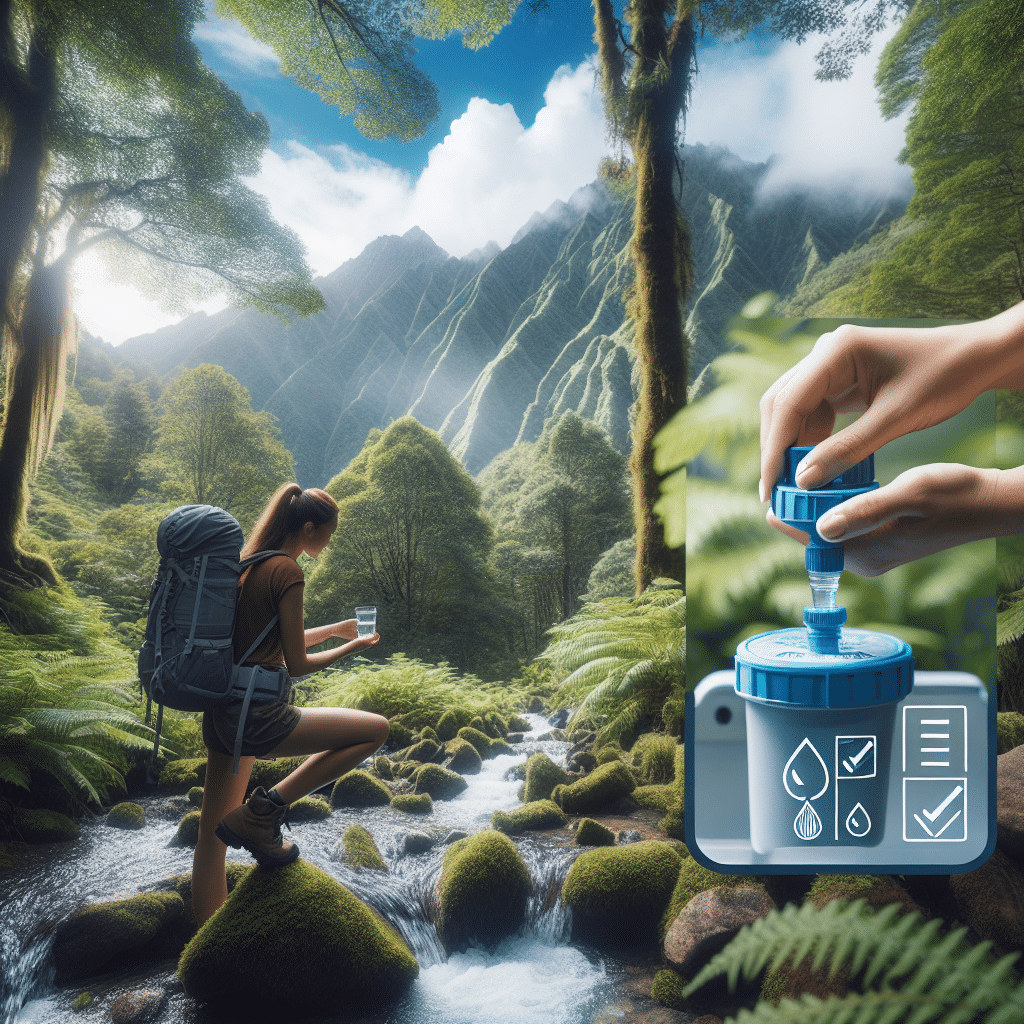Essential Tips for Finding Safe Water Sources While Hiking
Understanding Water Sources
When hiking, it’s crucial to stay hydrated, but finding safe drinking water can be challenging. Water sources include rivers, lakes, streams, and springs. However, not all water is safe to drink. Understanding how to identify safe water sources can enhance your hiking experience and keep you healthy.
1. Know Your Surroundings
Before heading out on your hike, research the area. Topographic maps can help you identify water bodies along your route. Look for blue lines or shaded areas that represent rivers, streams, or lakes. Websites and apps, such as AllTrails or Gaia GPS, can provide insights into the terrain and available water sources.
2. Identify Reliable Water Sources
When searching for water on your hike, prioritize areas where water is flowing rather than stagnant. Flowing water, such as rivers and fast-moving streams, is generally safer than standing water like ponds or lakes, which are more likely to harbor contaminants. Look for:
- Mountain Streams: High-altitude streams are often the cleanest.
- Springs: These natural water sources are often the freshest.
3. Distance from Contaminants
The proximity of a water source to potential pollution sources plays a critical role in water quality. Avoid water sources near:
- Trails used by livestock or wildlife.
- Campsites or human activities.
- Roads or factories.
A good rule of thumb is to source water at least 200 feet (about 70 steps) away from trails and campsites.
4. Assess Water Clarity
Clear water isn’t always safe, but murky water is a red flag. Avoid water that appears discolored or has floating debris. If you find clear water but are unsure of its safety, filtration or purification methods should be employed immediately.
5. Seasonal Considerations
During certain seasons, some water sources may dry up. Always check current conditions and seasonal fluctuations. In hot months, springs and streams may lose their flow, while during a rainy season, sources may increase in volume and might carry higher pollution levels.
6. Detecting Animal Activity
Look for signs of wildlife or livestock around a water source. Animal droppings, footprints, or recent grazing marks indicate higher bacteria levels. If you notice these signs, it’s best to seek another water source.
7. Use Portable Water Filters
Investing in a portable water filter or purifier can ensure you have access to safe drinking water. Options include:
- Pump Filters: Efficient for larger volumes.
- Gravity Filters: Great for larger groups.
- Straw Filters: Ideal for individual use.
Always research filter specifications to ensure they remove bacteria and viruses.
8. Chemical Purification Tablets
Chemical purification tablets, such as iodine or chlorine dioxide tablets, are effective for treating waterborne pathogens. Always follow the manufacturer’s instructions regarding dosage and wait time before consumption. Consider carrying these as a backup if your primary filtration method fails.
9. Boiling Water
Boiling is one of the simplest and most effective methods to purify water. Bring water to a rolling boil for at least one minute (three minutes at altitudes above 6,500 feet) to kill pathogens. Make sure to carry lightweight cookware suited for boiling water while hiking.
10. Portable UV Water Purifiers
Ultraviolet (UV) light purifiers are handy gadgets that can purify water in minutes. They are lightweight and easy to use, making them great for long hikes. Ensure the water is clear before using UV purifiers, as debris can hinder effectiveness.
11. Understanding Waterborne Pathogens
Awareness of common pathogens, such as Giardia, E. coli, and Cryptosporidium, is essential. These organisms can cause gastrointestinal distress and other serious health issues when ingested. Always take preventive measures while sourcing water.
12. Practice Leave No Trace Principles
Always strive to minimize your impact on nature. When collecting water:
- Don’t disturb the surrounding habitat.
- Avoid splashing water or causing erosion.
- Pack out any waste or trash.
13. Filter Quality and Maintenance
If you opt for a portable water filter, maintain it properly. Following your trip, clean your filter according to the manufacturer’s guidelines. Regular maintenance will extend its lifespan and ensure reliability during future hikes.
14. Hydrate Regularly
Even with a reliable water source, be mindful of your hydration needs. Monitor your intake throughout your hike, aiming for at least half a liter of water per hour in moderate weather. Adjust based on exertion levels and climate conditions.
15. Stay Informed
Join local hiking clubs or forums to learn from seasoned hikers. They can share tips on reliable water sources and purification methods specific to your hiking area. Online resources, such as blogs and guidebooks, can also provide invaluable information.
16. Carry Backup Water Supplies
On extended hikes, it’s wise to carry extra water. Hydration packs or collapsible water bottles are lightweight and can help you carry additional water, particularly if you’re unsure about the availability of water on your route.
17. Keep an Eye on Weather Conditions
Increasing temperatures and changing weather conditions can affect water availability. Always check the weather forecast before your hike and adjust your plans based on expected conditions.
18. Learn Local Flora
Familiarizing yourself with local plants can aid water sourcing. Some plants, like certain cacti or succulents, can provide moisture in extreme situations. Always verify plant safety before consumption.
19. Practice Water Fetching
If unfamiliar with sourcing water on hikes, practice during easier walks. Familiarize yourself with the techniques of finding and purifying water before embarking on more strenuous journeys.
20. Emergency Strategies
In case of emergencies, have a plan. Know how to signal for help or navigate to safety. If you run out of water, consider lowering your activity level to prevent dehydration and ration any remaining supplies until you can find a water source.
With these essential tips, hikers can confidently locate safe water sources while enjoying the great outdoors. Stay prepared, and ensure a healthy, enjoyable hiking experience.
